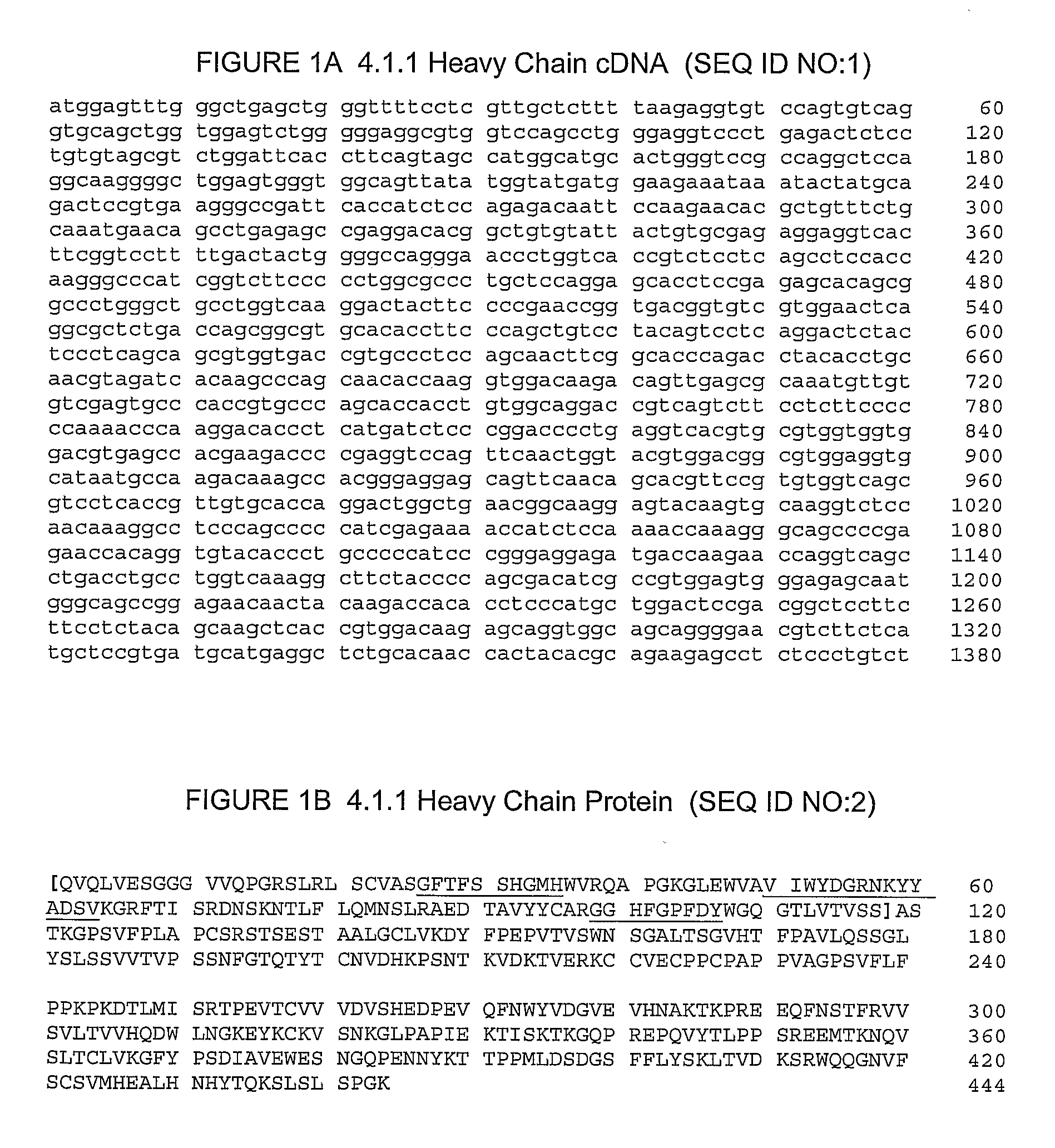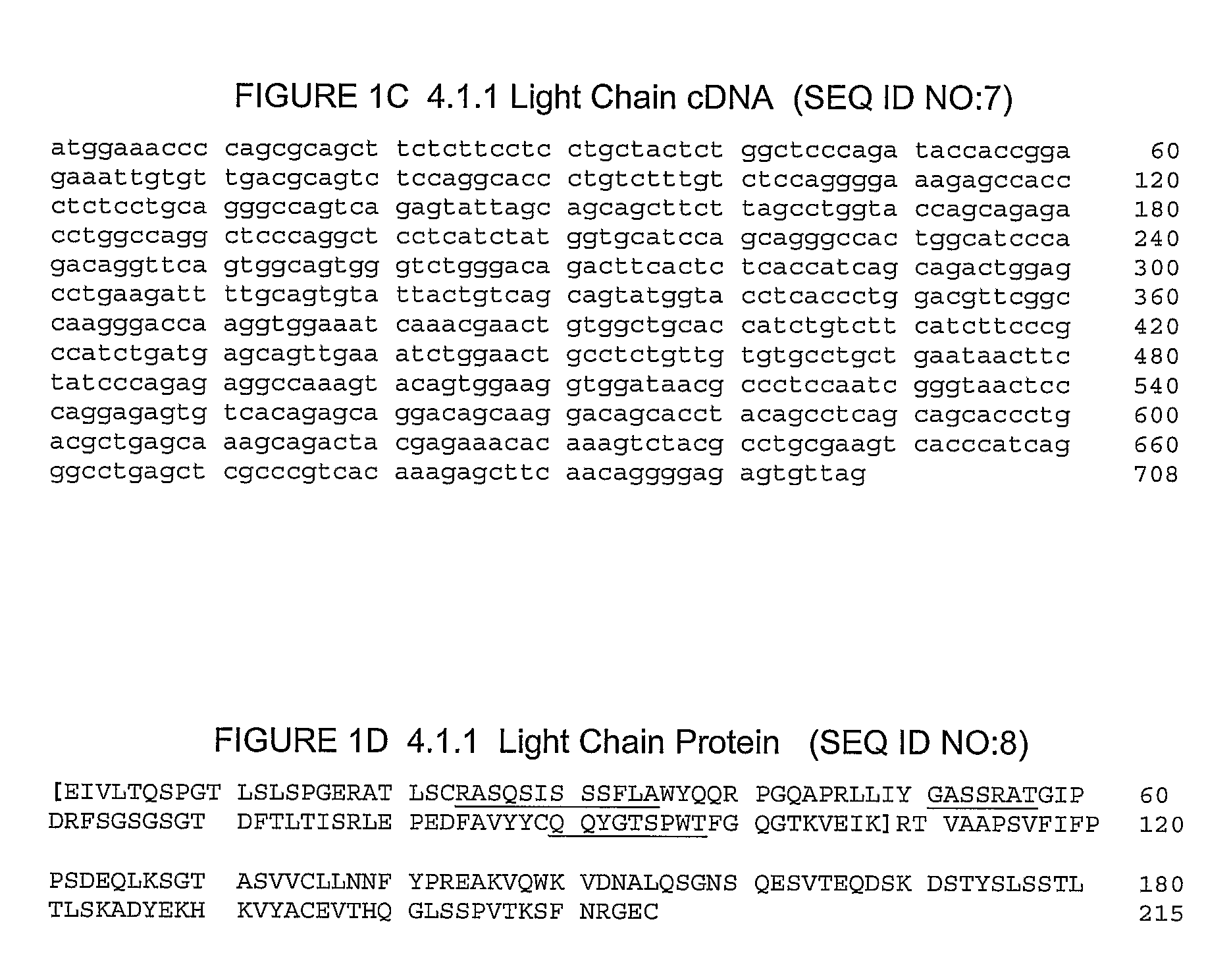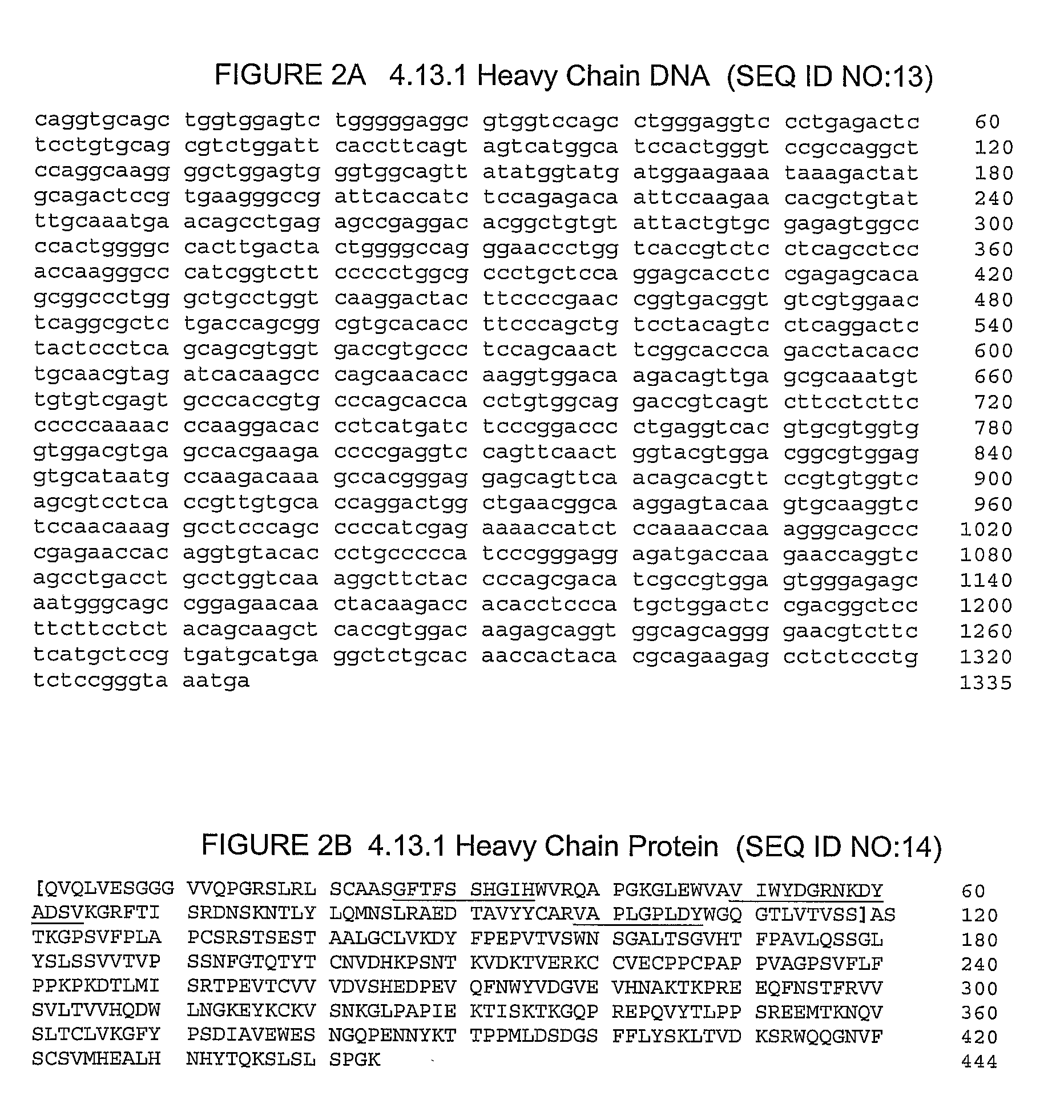Therapy of Prostate Cancer With Ctla-4 Antibodies and Hormonal Therapy
a prostate cancer and antibody technology, applied in the field of prostate cancer treatment with ctla4 antibodies and hormonal therapy, can solve the problems of long-felt and unmet need for novel methods of treatment for prostate cancer, a large number of patients will become refractory, and many will di
- Summary
- Abstract
- Description
- Claims
- Application Information
AI Technical Summary
Benefits of technology
Problems solved by technology
Method used
Image
Examples
example 1
Anti-CTLA4 in Combination with at Least Two Hormonal Therapy Agents in the Neoadjuvant Treatment of High Risk Prostate Cancer
[0202]Patients with prostate cancer who are eligible for radical prostatectomy and who have an intermediate or high risk of recurrence according to current medical standards are candidates for antibody-hormonal combination neoadjuvant therapy. The target population for this study is defined using the risk of biochemical recurrence instead of the probability of pathologically confined cancer. This approach is supported by the observation that patients with disease confined to the prostate may have a biochemical recurrence despite “definitive” local treatment. Therefore, this patient definition is more comprehensive. Considering recent data showing that a time to PSA failure of less than 2 years predicts for distant failure, patients who are at high risk for early PSA failure are candidates for neoadjuvant (and adjuvant) antibody-hormonal combination therapy as ...
example 2
Anti-CTLA4 in Combination with at Least Two Hormonal Therapy Agents in the Adjuvant Treatment of Clinically Localized Prostate Cancer
[0222]Patients with clinically localized prostate cancer are administered (prior and during radiotherapy) both goserelin (ZOLADEX) and flutamide (EULEXIN) per hormonal therapy protocol, e.g., EULEXIN is administered 250 mg tid (three times a day), and ZOLADEX is administered 3.6 mg subcutaneously monthly for a total of four months (2 months prior and 2 months during radiotherapy). Alternatively, the patient receives 24 additional months of treatment with ZOLADEX. Such regimen for adjuvant therapy, typically administered with radiotherapy, but not with or after surgery, is described in, e.g., Hanks et al. J Clin Oncology 21: 3972-3978 (2003).
[0223]The patient is further administered a single IV infusion (100 mL / hr) of ticilimumab as described herein at a dose of about 3 mg / kg, or 6 mg / kg or 10 mg / kg or 15 mg / kg. Prophylactic anti-diarrheals are given as...
example 3
Anti-CTLA4 in Combination with at Least Two Hormonal Therapy Agents in the Treatment of Patients with Rising PSA Prostate Cancer
[0231]Patients with prostate cancer and rising PSA following surgery or radiotherapy are administered either leuprolide (LUPRON) or goserelin (ZOLADEX), with or without bicalutamide (CASODEX) or flutamide (EULEXIN) per standard hormonal therapy protocol, e.g., LUPRON is administered 7.5 mg intramuscularly approximately every four weeks, ZOLADEX is administered 3.6 mg subcutaneously approximately every four weeks, CASODEX is administered 50 mg daily for fourteen days of the first cycle only, and EULEXIN is administered 250 mg tid daily. The patient is further administered a single IV infusion (100 mL / hr) of ticilimumab as described herein at a dose of about 1 mg / kg, 3 mg / kg, 6 mg / kg, 10 mg / kg or 15 mg / kg. Prophylactic anti-diarrheals are given as appropriate.
[0232]The treatment is repeated every 28 days thereafter without dose escalation, in the absence of i...
PUM
| Property | Measurement | Unit |
|---|---|---|
| time | aaaaa | aaaaa |
| equilibrium dissociation constant | aaaaa | aaaaa |
| equilibrium dissociation constant | aaaaa | aaaaa |
Abstract
Description
Claims
Application Information
 Login to View More
Login to View More - R&D
- Intellectual Property
- Life Sciences
- Materials
- Tech Scout
- Unparalleled Data Quality
- Higher Quality Content
- 60% Fewer Hallucinations
Browse by: Latest US Patents, China's latest patents, Technical Efficacy Thesaurus, Application Domain, Technology Topic, Popular Technical Reports.
© 2025 PatSnap. All rights reserved.Legal|Privacy policy|Modern Slavery Act Transparency Statement|Sitemap|About US| Contact US: help@patsnap.com



